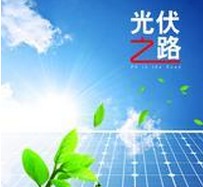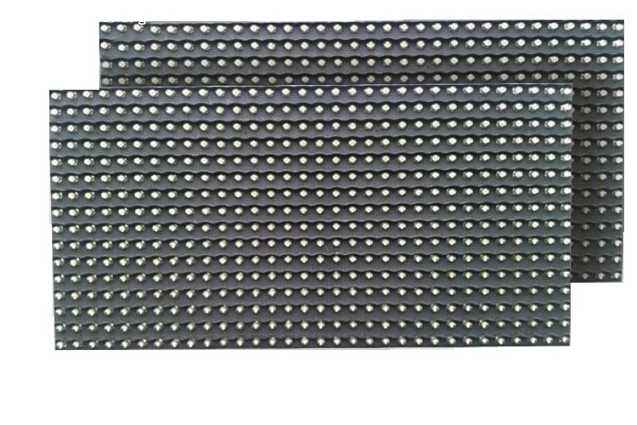 Zhang Yunkai, the first home photovoltaic power generation device manufacturer in Hebei Province, and Zhang Junkai, a Baoding citizen, is enjoying the “sunshine lifeâ€. Solar panels are installed on roofs and exterior walls, and the generated electricity can not only meet daily life, but also can be sold to the national grid. The number of bi-directional meters of the Zhangjia house's exterior wall and the State Grid's access is negative by 900. In other words, only for the rest of the month, Zhang has transferred 900 kwh of electricity to the national grid in addition to his own use.
Zhang Yunkai, the first home photovoltaic power generation device manufacturer in Hebei Province, and Zhang Junkai, a Baoding citizen, is enjoying the “sunshine lifeâ€. Solar panels are installed on roofs and exterior walls, and the generated electricity can not only meet daily life, but also can be sold to the national grid. The number of bi-directional meters of the Zhangjia house's exterior wall and the State Grid's access is negative by 900. In other words, only for the rest of the month, Zhang has transferred 900 kwh of electricity to the national grid in addition to his own use. According to data from the National Energy Administration, as of the end of 2012, China's installed solar power capacity was 7 million kilowatts. The National Medium- and Long-Term Development Plan for Renewable Energy proposes that by 2020, the total installed capacity of solar power will reach 18 million kilowatts. With the gradual rollout of photovoltaic power generators such as Zhang Junkai, it is increasingly clear that Golden Sun is moving into more and more people's homes.
Photovoltaic power station home
On May 15, the reporter went to Shizhuang Street, which is located in the south of Baoding City. This is the junction between the urban and rural areas. Zhang Junkai’s two-story building is particularly distinguished by the dark blue cells on the roof and the western facade.
These blue cells are the main device for receiving solar energy. Zhang Junkai led the reporter in front of the house and visited the reporter to introduce him to the reporter’s new equipment. The “family small power station†is simple to install and easy to use. In addition to the solar cells (also known as solar high-efficiency single-crystal modules), it also includes bus bars, inverters, and wire rods. The only difference from the traditional power supply mode is the inverter switch and the dedicated meter.
Zhang Junkai told the reporter while pushing the switch with ease, and turned on the inverter switch to generate electricity. The dedicated meter can display the power generation, electricity consumption, and power generation surplus in real time. When the power generation is insufficient (for example, at night), the system can automatically switch between solar power generation and utility power.
The person in charge of the installation project, Zhao Liang, responsible person of Yingli Group Distributed Power Investment Management Co., Ltd. (hereinafter referred to as Yingli Group), said that building a small family power station is not complicated. Consumers only need to provide basic materials such as real estate certificates, and study and design from the project. All applications are filed by the Yingli Group. After the installation is completed, the State Grid Corporation of China will inspect the safety of the project on the grid.
For this kind of one-stop service of the Yingli Group, Zhang Junkai, who is usually busy with work, expressed satisfaction: “Since March of this year, I’ve been contacted until mid-April and the installation has been completed. At the end of April, I’ve been connected to the network. During the one-and-a-half months, I signed it. One word, nothing else."
In Baoding City, the development of photovoltaic integration community is also progressing. On March 25 this year, with the last solar panel installed on the outer wall of the high-rise residential building in the Yuansheng Jiahe Community, the first community solar power facility in Baoding City was completed. It is reported that this is the largest civil photovoltaic building integration project in Hebei Province.
On the afternoon of May 15, the reporter came to the large courtyard in Baoding High-tech Zone with the owner of the community, Ms. Chen Xia. Looking up, I saw the exterior walls of the eight high-rise buildings in the community. The dark blue panels were arranged neatly, as if wearing a beautiful coat.
It is said that the total investment of the entire project is 26 million yuan. Because the original intention is to promote the construction of photovoltaic power generation residential communities through the demonstration effect, the project investment is not included in the cost of real estate, and house prices have not been increased.
Mr. Zhang from the Engineering Department of Yingli Group said that the photovoltaic panels are mainly installed on east-west facades and roofs on the 28th to 32th floors of each building, with a total of 3356 installations, a total area of ​​8,000 square meters, a total capacity of 788 kW, and an annual power generation of 80 Millions of watt-hours are mainly used in community areas such as road lighting and landscape lighting, and the rest of the electricity is available online.
The reporter learned that as a local company in Baoding, Yingli Group placed the starting point of the first household-based power generation project and photovoltaic integration community construction in the province as its base camp. It is clear that it has the right to weigh the considerations of reality and strategic layout. For Zhang Junkai and the owners of Yuanshengjiayu, it is worth fortunate that they can get the first prize for the first time, but they are more than happy to see that optoelectronic integration can bring more life than before.
More than available for sale
From the success of the grid connection to the present, neighbors have come to consult with Zhang Junkai every day, but there are not many people who are determined to save money. Zhang Junkai said that his own small power station, a total of 72 265W high-power components, each covering about two square meters, a total area of ​​about 120 square meters, with a total installed capacity of 19 kilowatts, the total system price of 190,000 yuan.
Although this is not a small number, Zhang Junkai believes that this is an investment that will not be lost: According to the peak sunshine hours in the Baoding region, each block can send 1 to 2 kWh per day, and all components can generate 60 watts per day. More kilowatt-hours, the annual power generation of 21,728 kwh. The family of six usually uses 10 kwh per day on average, and the remaining electricity is sent to the national grid. The electricity price per kilowatt-hour is 0.45 yuan. In this way, the cost can be recovered in about 7 to 8 years. "The Yingli Group promises to provide a 25-year component warranty, which means that the remaining 10 years of earnings will be even more profitable to me." “From the end of April to the present, in addition to the 80 kWh electricity used in home lighting, TVs, and refrigerators, my small power station has already transmitted more than 900 kilowatt-hours of electricity to the national grid.†The reporter calculated roughly, and for a month and a half, Zhang Electric did not spend money, but also profited more than 400 yuan.
Of course, Zhang Junkai’s decision to save money was finally made by the State Grid Corporation of China in February of this year’s “Opinions on Doing a Distributed Power Grid Service Work,†which clearly stated that the distributed power generation project is free to access, and the excess power is in full. Acquisition.
Like Zhang Junkai, Chen Xia, the owner of Yuansheng Jiahe Community, is also delighted with the upcoming green life. Because of the existence of public solar power installations in the community, the cost of elevators and public lighting to be paid by the family is lower than other similar communities. A large part. When there is surplus in peak generation of electricity, it can also enjoy “solar electricity†lower than the ordinary electricity price.
I heard that the district has achieved some power generation and networking. Chen Xia began to figure out how to apply for a separate power generation unit like Zhang Junkai. Spontaneous use, surplus electricity to sell money.
Wang Zhongmin, member of the National Committee of the Chinese People's Political Consultative Conference and Chairman of the Hebei Province Entrepreneurs Association, was an expert who earlier called on the country to encourage the development of household distributed photovoltaic power generation systems. The entrepreneur, who has argued in the proposal for two consecutive years to speed up the development of the solar power industry, asserted that with the gradual clearing of the national policy, as a stable investment method, the solar energy power generation system will become possible for every household. Owned "PV property."
Popularization of solar energy applications
The data shows that up to now, China's installed capacity of solar power has reached 3 million kilowatts, which is more than 60% of the world's total output, ranking first in the world.
However, due to the technical requirements of the new energy industry for access to the grid, coupled with the high cost of the initial stage of the industry, only 10% of solar energy products were used domestically. “In the past, exports depended on exports. In the future, we must increase domestic market planning.†On October 27, 2012, at the China International Solar Energy Summit hosted by the National Energy Administration, Wang Bohua, Secretary General of the China Photovoltaic Industry Alliance, and several officials from the National Energy Administration Expressed similar views.
On the day before the summit, the State Grid Corporation of China announced that from November 1st of that year, all distributed PV projects that meet the requirements will provide free system solution development, on-grid detection, commissioning and other full-process services. The excess power was purchased in full. This means that in the future all rooftop and photovoltaic building integration projects in China will be free to the grid.
The favorable policies have made companies that have always had a better vision for new energy resources to be more convinced of their past judgments. Miao Jia, general manager of Yingli Group's distributed power investment management company, said that solar energy as an alternative energy source should be popularized.
In April 2012, the “Twelfth Five-year Development Plan for Solar Photovoltaic Industry†of the Ministry of Industry and Information Technology pointed out that by 2015, the cost of photovoltaic power generation will strive to drop to 0.8 yuan/kWh, making it a certain degree of economic competitiveness.
However, for industry companies, it does not seem necessary to wait until 2015. The relevant person in charge of the Yingli Group told reporters recently that technological progress and innovation have brought the cost of photovoltaic power generation closer to thermal power. With the vigorous promotion of the national policy, PV has the strength to compete with the traditional power generation model. For some time in the future, photovoltaic power generation and traditional energy sources will certainly coexist.
JoyLED Outdoor LED Modules include the models of: P3.2mm, P3.334mm, P3.91mm, P4mm, P4.81mm, P5mm, P6mm, P6.67mm, P8mm, P10mm, P16mm, P20mm. Nowdays, more and more customer need higher resolution to improve the video quality, so outdoor HD series of P4mm, P4.81mm, P5mm, P6mm is the most common used models. JoyLED Outdoor Led Module is widely used for Advertising media, monitoring center, command center, energy center, education center, television station, radio station, conference center, transportation, real estate, sports venues, leasing, stage performing arts, studio etc.

Outdoor Led Module,Outdoor Led Flexible Module,P4 Outdoor Flexible Module,Flexible Led Display Module
Shenzhen Joy LED Display Co., Ltd. , https://www.joe-led.com
![<?echo $_SERVER['SERVER_NAME'];?>](/template/twentyseventeen/skin/images/header.jpg)